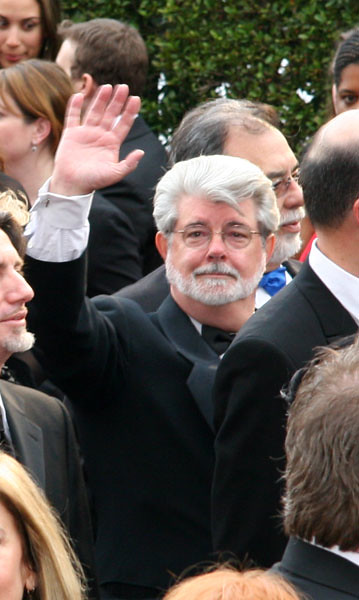
George Lucas stands as one of the most influential filmmakers in the history of cinema, having created cultural phenomena that continue to shape entertainment decades later. His pioneering visual style, innovative storytelling, and revolutionary approach to filmmaking technology transformed the industry and inspired generations of creators.
Early Life and Career
Born on May 14, 1944, in Modesto, California, Lucas initially pursued racing before a near-fatal accident redirected his passion toward film. He studied at the University of Southern California’s School of Cinematic Arts, where his student film “THX 1138: 4EB” caught the attention of filmmaker Francis Ford Coppola, who became his mentor.
Breakthrough Success
Lucas’s first major feature film success came with “American Graffiti” (1973), a nostalgic look at early 1960s teenage culture. Made on a modest budget of $777,000, the film grossed over $115 million domestically and earned five Academy Award nominations, including Best Picture and Best Director. Its authentic portrayal of American youth culture and innovative use of popular music as storytelling elements established Lucas as a significant filmmaker.
The Star Wars Phenomenon
In 1977, Lucas forever changed cinema with “Star Wars” (later retitled “Star Wars: Episode IV – A New Hope”). When major studios initially rejected his space opera concept, Lucas negotiated to retain merchandising rights—a decision that would prove extraordinarily lucrative. The film broke box office records and revolutionized special effects through Lucas’s newly formed company, Industrial Light & Magic.
The original Star Wars trilogy—completed with “The Empire Strikes Back” (1980) and “Return of the Jedi” (1983)—created an unprecedented cultural phenomenon. Lucas’s expansive universe, filled with memorable characters and mythological storytelling, resonated across generations. His fusion of classical hero’s journey narratives with groundbreaking visual effects established a new template for blockbuster filmmaking.
Indiana Jones and Producer Success
Lucas collaborated with director Steven Spielberg to create another iconic franchise with archaeologist-adventurer Indiana Jones. Beginning with “Raiders of the Lost Ark” (1981), the series combined pulp adventure storytelling with spectacular action sequences. As producer, Lucas demonstrated his talent for developing concepts with broad appeal while maintaining artistic integrity.
Technological Innovation
Perhaps Lucas’s most enduring legacy lies in his technological innovations. Through his companies:
- Industrial Light & Magic revolutionized visual effects
- Skywalker Sound pioneered new approaches to film audio
- LucasArts developed groundbreaking interactive entertainment
- THX certification established new standards for theatrical sound quality
Lucas was among the first major filmmakers to embrace digital technologies, shooting “Star Wars: Episode II – Attack of the Clones” (2002) entirely on digital cameras—a controversial but forward-thinking choice that anticipated the industry’s eventual shift away from film.
Directorial Style and Themes
Lucas’s directorial approach features several distinctive elements:
- Visually dynamic compositions with meticulous attention to detail
- Fast-paced editing with “wipe” transitions that hearken back to serials
- Rich worldbuilding with lived-in environments and comprehensive design languages
- Themes exploring the tension between technology and humanity
- Narrative structures inspired by Joseph Campbell’s hero’s journey
- Strong moral frameworks emphasizing personal growth and sacrifice
Cultural Impact and Legacy
The influence of Lucas’s work extends far beyond box office figures:
- Star Wars pioneered the modern franchise model that dominates today’s entertainment landscape
- His merchandising approach transformed how films generate revenue
- His commitment to technological innovation raised audience expectations for visual spectacle
- The Star Wars expanded universe created a template for transmedia storytelling
- His emphasis on mythological storytelling structures influenced countless filmmakers
Later Career and Philanthropy
In 2012, Lucas sold Lucasfilm to Disney for $4.05 billion, stepping back from direct involvement in Star Wars while focusing on philanthropy. The George Lucas Educational Foundation and his pledge to donate much of his wealth to improving education reflect his belief in the transformative power of learning.
Critical Assessment
While critical reception of Lucas’s work has varied—particularly regarding the Star Wars prequel trilogy—his significance as a filmmaker is undeniable. He fundamentally changed how movies are made, marketed, and experienced. His greatest achievement may be creating stories and worlds that continue to captivate new generations, demonstrating the enduring power of his creative vision.
George Lucas remains the quintessential independent filmmaker who, paradoxically, built an empire. By maintaining creative control and following his unique vision, he transformed not just science fiction but cinema itself, leaving an indelible mark on global culture that few artists in any medium have matched.
